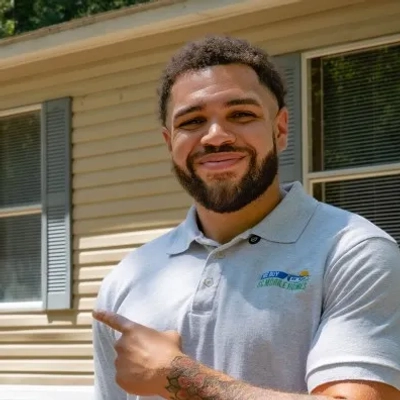25 Techniques for Handling Objections in Sales
Handling objections effectively is a crucial skill in sales that can make or break a deal. This article presents a comprehensive set of techniques for addressing customer concerns, drawing insights from seasoned experts in the field. By mastering these strategies, sales professionals can transform objections into opportunities for building trust and closing more sales.
- Listen and Educate to Build Trust
- Reframe Objections as Nervous System Signals
- Isolate Price and Amplify Long-Term Value
- Use Transparency and Empathy in Real Estate
- Turn Concerns into Collaborative Problem-Solving
- Walk Properties Together as Problem-Solving Partners
- Demonstrate Solutions with Live Proof
- Introduce Key Team Members Personally
- Revisit Initial Goals During Objections
- Break Down Concerns with Engineering Approach
- Build Genuine Connections Before Selling
- Acknowledge Concerns and Redirect Conversations
- Collaborate on Step-by-Step Sale Plans
- Honor Emotional Ties with Empathetic Solutions
- Share Local Knowledge to Build Trust
- Offer Tangible Support to Address Concerns
- Provide Written Offers for Transparency
- Reframe Objections as Educational Opportunities
- Address Potential Concerns Proactively
- Let Clients Verify Data Themselves
- Give Honest Advice Even Against Selling
- Connect Potential Clients with Past Customers
- Include Trusted Advisors in Conversations
- Simplify Decisions and Demonstrate Value
- Share Personal Stories for Authenticity
Listen and Educate to Build Trust
At Achilles Roofing and Exterior, I've learned that handling objections is less about "selling" and more about listening. Most homeowners don't object because they don't want the work done—they object because they're unsure if they can trust the contractor in front of them. And in roofing, where the wrong choice can cost tens of thousands down the road, that concern is justified.
The technique I use is simple but effective: I slow the process down and put facts on the table. For example, if a homeowner is hesitant about the cost of a roof replacement, instead of pushing numbers, I walk them through exactly what goes into it. I'll lay out the material differences, explain how proper ventilation affects the life of the roof, and show them photos from past projects where cutting corners led to early failure. When people see the "why" behind our recommendations, it shifts the conversation from price to value.
A specific instance comes to mind in Houston where a homeowner was concerned about whether they really needed a full replacement or just a repair. Instead of trying to close them on the spot, I got on the roof with them and showed them the decking rot, lifted shingles, and water damage that wasn't visible from the ground. I explained the risks of just patching over it and how that could cost them more in the long run. By showing, not just telling, I removed the guesswork. In the end, they chose the full replacement, not because I convinced them, but because they could see for themselves that it was the right call.
That's how I build trust—by being transparent, educating homeowners, and making sure they feel confident about the decision before signing anything. Objections aren't problems to overcome; they're opportunities to prove that we're different from the contractors who just want a quick deal. When homeowners realize we're focused on their best interest, not just closing a sale, trust follows naturally.
Reframe Objections as Nervous System Signals
In my business, I view objections not as resistance but as information. Often, when someone hesitates during the sales process, it's their nervous system signaling fear, overwhelm, or uncertainty. Rather than trying to push past it, I slow down and create space for them to share what feels uncomfortable. A specific technique I use is reflective listening: I repeat back what I heard in their words, validate the concern, and then gently reframe it through the lens of nervous system regulation. For example, if a leader says, "I'm not sure I have time for this," I'll explore how their current stress response is already costing them time and energy. This approach not only addresses the concern but also models the very kind of steady, grounded leadership we'll be building together, which naturally deepens trust.

Isolate Price and Amplify Long-Term Value
My most effective method for handling customer objections, especially around price, is an approach I call "Isolate and Amplify." It's a technique designed to move the conversation from a transactional haggle to a collaborative discussion about long-term value.
First, instead of getting defensive about the cost, I work to isolate it. I'll ask a calm, direct question: "I understand completely, and I appreciate your honesty. Setting the price aside for just one moment, is this the piece that you truly love? Does it tell the story you want to tell?" This confirms that we've already succeeded in the creative part of our journey and that price is the only remaining hurdle.
Once the price is isolated, I amplify the value of their investment. I re-center the conversation on the fact that this piece isn't a commodity; it's a future family heirloom that they will look at every single day for the rest of their lives. I'm not defending our costs; I'm championing their long-term happiness. This technique builds immense trust by showing our clients that my primary concern is their lasting satisfaction, not just making a sale.

Use Transparency and Empathy in Real Estate
In real estate, objections are inevitable, whether it's a seller worried about pricing their home too low or a buyer hesitant about making a competitive offer. For me, the most effective way to handle these situations is with transparency and empathy. Instead of pushing back, I make it a priority to clarify and verify the information so my clients feel confident making decisions.
For example, I had a seller who believed their home was worth significantly more than the market suggested. Instead of dismissing their concern, I walked them through a detailed comparative market analysis, explained current trends, and laid out the risks of overpricing, such as longer days on market or missed opportunities with qualified buyers. By backing up my advice with data and patiently addressing their concerns, we were able to price the home strategically. The property sold quickly and at a strong price point, and the client later told me that the transparency was what gave them peace of mind.
In my opinion, handling objections isn't about winning an argument; it's about building trust. Clients want to feel heard and understood. When you combine facts with empathy, you turn potential roadblocks into opportunities to strengthen the relationship. That's how I've built long-term trust with clients at Jack Ma Real Estate Group.

Turn Concerns into Collaborative Problem-Solving
We handle objections by treating them as buying signals, not obstacles. Instead of rushing to "overcome" concerns, we slow down and ask deeper questions to uncover what's really behind them. One technique that works consistently is mirroring the concern back with context; for example, "It sounds like you're worried about the onboarding time. Can you walk me through what an ideal rollout looks like for you?" This moves the conversation from defensive selling to collaborative problem-solving. At Franzy, that approach has turned hesitation into trust because prospects see we're not trying to push them but we're working with them to get it right.

Walk Properties Together as Problem-Solving Partners
When I hear an objection--such as a concern about hidden fees or feeling rushed--I make a point to slow down and invite the homeowner to walk the property with me as if we're problem-solving together. I'll point out things I'd fix (and why), then ask if they'd do it differently, turning it into a real conversation, not a pitch. That way, they see me as a partner in the process, not just a buyer--which goes a long way in building trust from the very start.

Demonstrate Solutions with Live Proof
I handle customer objections by acknowledging them openly and bringing proof from real deployments rather than just giving assurances. This approach builds credibility and shows that we understand their concerns.
For example, during a discussion with a defense unit, the client was concerned whether simulators could truly replicate high-stress combat scenarios. Instead of simply stating "our simulators can," I arranged a live demo using one of our existing installations where the client's team could experience a desert combat scenario. They could see how the simulator replicated sandstorm visibility, decision-making under pressure, and convoy coordination.
This technique worked because it shifted the conversation from "trust our word" to "see it for yourself." By making the customer part of the validation process, objections turned into confidence. In the end, not only did the client move ahead with the purchase, but they also became an advocate by recommending our solutions at defense forums.

Introduce Key Team Members Personally
One simple technique I use when sellers worry about our virtual model is introducing them to one of my key team members--like our lead coordinator who handles paperwork--on a quick call. This approach helps sellers know they have a dedicated person to assist them every step of the way.
For example, when a client expressed fear of feeling lost between offer and closing, I had our project manager reach out immediately. The project manager walked them through timelines in plain language. Now, that personalized backup makes the client feel supported and builds lasting trust beyond just the transaction.

Revisit Initial Goals During Objections
One way I build trust with clients during objections is by making a point to revisit their initial goals and priorities out loud, right in the moment. For example, if someone worries the deal isn't the right fit, I'll pause and say, "Let's go back to what you shared matters most to you," then check together if the offer lines up. By focusing on their big picture first, not just the details, I help people feel heard and empowered to ask for what they truly need--trust naturally follows from there.

Break Down Concerns with Engineering Approach
I use what I call the 'engineering approach' - when someone raises a concern, I break it down into smaller, manageable pieces and tackle each one systematically. For instance, if a seller worries about the condition of their home affecting the offer, I'll walk through each room with them, pointing out what actually impacts value versus what doesn't, using my technical background to explain things clearly. This methodical problem-solving approach, combined with transparency about my calculations, helps people feel confident they're making an informed decision based on facts, not emotions.

Build Genuine Connections Before Selling
The "Just Be a Human First" Technique
"Look, everyone tries to 'build rapport' for 30 seconds then pitches. I do the opposite—I spend the first 10 minutes genuinely getting to know them as a person.
I'll research them beforehand and start with: 'Before we dive in—I saw you restore vintage motorcycles? What are you working on right now?' Then I shut up and actually listen.
They'll talk for 15 minutes about their 1972 Honda, their kid's hockey tournament, or how they went from engineer to CEO. I'm genuinely curious—asking 'No way, then what happened?' or 'How'd you even get into that?'
By the time we talk business, I'm not 'the sales guy'—I'm the dude who gets their weird hobby. When they introduce me, they say 'This is my buddy who happens to do funding.'
The results? When you actually give a shit about their story, they stop negotiating. They literally say things like 'Just tell me what we need to do.' My close rate tripled when I stopped trying to close and started trying to make friends.
The key? You can't fake genuine interest. Actually care about the human on the other end of the phone. The sale just... happens."
Thank you! Please include a backlink if you use this content. I've checked your site and noticed very good progress over the last year. It's growing well! Thank you again!
If you have any questions, you can email me at jmurphy@agencysquirrel.com. The site for the backlink is: Crmsquirrel.com
Acknowledge Concerns and Redirect Conversations
Building Trust Through Acknowledgment
Handling customer objections in a way that truly builds trust is less about having a perfect rebuttal and more about demonstrating genuine empathy. The goal isn't to win an argument; it's to show the customer that you hear and respect their concerns. The most effective technique I've found is what I call the "Acknowledge and Redirect." It's a simple two-step process that disarms the objection and keeps the conversation productive. Instead of immediately jumping to defend your product or price, you start by validating their point. This instantly puts the customer at ease.
Here's how it works. A customer might say, "I'm not sure if we can afford this right now." A typical, and often ineffective, response would be to immediately defend the price. A more trusting approach is to acknowledge their concern directly: "I completely understand. Budget is a significant factor for any business." This shows them that you're listening and that you're on their side. After acknowledging, you then redirect the conversation by asking a clarifying question that gets to the root of the issue. You might ask, "If we were able to show a clear return on investment that makes this a net positive for your budget, is there anything else that would be holding you back?" This technique shifts the focus from their concern about the price to a collaborative discussion about value, and that's a conversation that truly builds trust.

Collaborate on Step-by-Step Sale Plans
One approach that has worked well for me is inviting sellers to walk through every step of the sale together—from their biggest worries to what success would look like for them—so we're truly on the same team. For example, if someone's nervous about timing or paperwork, I'll sit down, explain my process using plain language, and lay out exactly what happens and when, based on their needs. This open, step-by-step collaboration helps people feel respected and reassured, because I'm not just pushing for a sale—I'm listening and making a plan that works for them.

Honor Emotional Ties with Empathetic Solutions
When addressing objections, I draw from my mission work's relational approach by asking homeowners, "What does ideal feel like?" Then, I co-create solutions that honor their emotional ties. For instance, when a seller hesitated about leaving their family home, I spent an afternoon digitizing cherished photos and mapping nearby parks they could frequent after moving. This intentional empathy transforms transactions into meaningful transitions.
Share Local Knowledge to Build Trust
When a seller questions my offer, I often find it helps to talk about the history of their specific block or neighborhood, drawing on the fact that I was born and raised right here in Wilmington. For instance, I might share a story about another house I bought on their street years ago and the unique challenges it had, which helps them understand my offer is based on real-world, local experience, not just online data. It builds trust because they see I'm a neighbor who truly knows their home's place in our community.

Offer Tangible Support to Address Concerns
I build trust by tackling objections instantly with a tangible offer--such as arranging my team to help pack or clean, inspired by my hospitality roots. For example, when a seller expressed anxiety about moving day, I provided a complimentary deep clean of their new home before move-in. This immediate support reinforces that I'm investing in their peace of mind, just as I would for guests in my Airbnb properties.

Provide Written Offers for Transparency
One technique I rely on is providing every offer in writing, even if we're just having an initial conversation. That way, homeowners can review everything on their own time and bring up any concerns without pressure. I've found this helps people feel in control and reassured that there are no surprises, just honesty--they see exactly what I'm offering, plain and simple.

Reframe Objections as Educational Opportunities
Hello,
The most effective way I handle objections is by reframing them as collaboration, not confrontation. When a client pushes back on price, I don't defend it; I walk them through the lifetime value of reclaimed stone versus cheaper alternatives that often need replacing. This shifts the conversation from cost to investment. A developer in California once told me our reclaimed granite was "too expensive." Instead of countering with discounts, I invited him to our yard, showed him the exact patina that only decades of weathering could create, and compared it side-by-side with a newly quarried option. He immediately saw that the aged texture would save him on additional finishing costs, and he closed the order on the spot. By exposing hidden advantages rather than conceding ground, we not only earned his trust but also secured repeat business. Objections are simply missed opportunities for deeper education.
Best regards,
Erwin Gutenkust
CEO, Neolithic Materials
https://neolithicmaterials.com/

Address Potential Concerns Proactively
One technique I've found especially powerful for handling objections is bringing them up first. I've learned that if I raise an issue, it becomes part of a natural conversation. However, if the client has to bring it up, it becomes a true objection — something I now have to defend against.
For example, I was meeting with a prospect recently about SEO services. I knew price could be a concern because they had been burned before by a low-cost provider who overpromised and underdelivered. So instead of waiting for them to ask, I proactively addressed it:
"I want to be upfront — we're not going to be the cheapest option out there. But here's why our clients choose us: we focus on measurable results, transparency, and long-term growth. And if price is your only deciding factor, we may not be the right fit."
What happened next was interesting. Instead of pushing back, the prospect nodded and said, "That's exactly what I was worried about — I don't want cheap, I want it done right." By bringing it up first, I had turned what could have been a tense objection into an open conversation about value.
That's why I always recommend this approach. When you're proactive, you frame the concern on your terms, demonstrate honesty, and build trust. Clients don't expect perfection — they expect transparency. And that's what turns objections into opportunities.
Let Clients Verify Data Themselves
When someone voices a concern--like worrying they're not getting market value--I hand them my phone and let them look up recent sales in their neighborhood themselves. Then, we compare those numbers to my offer together. This puts them in the driver's seat to verify everything I'm telling them. I've found that when people can see the data with their own eyes, it eliminates doubt and builds real confidence in our transaction.

Give Honest Advice Even Against Selling
When a homeowner voices a concern--like being worried they're missing out if they sell now--I always take a moment to listen, then share what I'd consider if I were in their shoes, even if that means suggesting they hold off on selling. For example, some sellers appreciate it when I break down the pros and cons of waiting versus selling today based on their specific goals and market conditions. This kind of honest, no-pressure conversation goes a long way in showing folks I truly want what's best for them, not just a fast closing.
Connect Potential Clients with Past Customers
A technique I rely on is inviting the seller to meet a past client--or even have a quick call with them--to hear directly about their experience working with us. For instance, when people have doubts about the selling process or worry it's too good to be true, I'll connect them with someone who's been in their shoes. That kind of personal connection and real-world endorsement goes a long way in demonstrating our integrity and making trust tangible.

Include Trusted Advisors in Conversations
When a seller voices a concern--like uncertainty about accepting a cash offer--I invite them to bring a trusted family member or advisor into our conversations. This way, they feel supported and can ask any questions together, making the process less intimidating and more transparent. I've found this simple step puts hearts and minds at ease, because they know I'm there to serve, not pressure.

Simplify Decisions and Demonstrate Value
When a customer raises an objection, I focus on building trust, transferring confidence, and making it easy to say yes. This process begins with listening closely to understand the real underlying concern.
Rather than overwhelming them with information, I simplify the decision. I acknowledge the concern, demonstrate how our solution directly addresses it, and then outline a clear, low-friction next step.
For example, if price is brought up, I don't debate it. Instead, I might say:
"I understand—budget is important. That's why we track every call and click, so you'll see the return as it happens. Let's start with the option that gets you results quickly and grow from there."
This approach is effective because I'm not pushing—I'm demonstrating that I understand, showing my belief in the solution, and making the path forward easy. This combination builds trust and gives customers the confidence to say yes.

Share Personal Stories for Authenticity
One technique I rely on is simply sharing my own family's story and why we do what we do—because people respond to authenticity, not just sales pitches. For example, when someone expresses hesitance about selling "as-is," I'll show before-and-after photos from projects we've done and explain step-by-step how we'll handle repairs, so sellers don't have to worry. Inviting them into the process, as if they're part of our own family's journey, helps break down walls and reassures them their needs come first.






